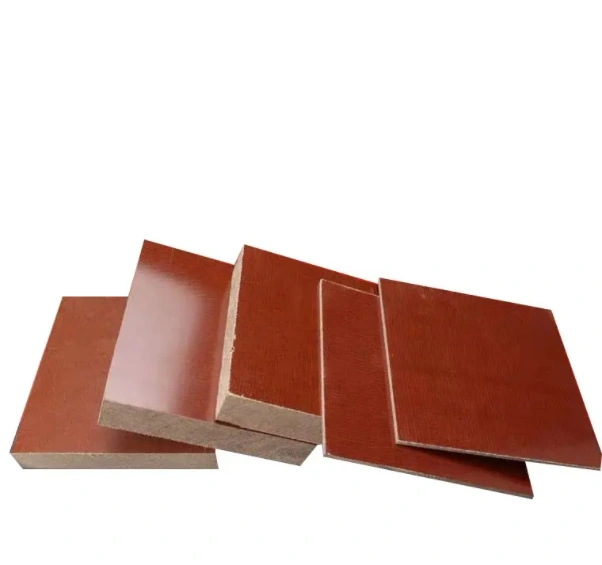What Does Flexural Modulus Indicate in Composite Materials?
Definition and Significance of Flexural Modulus
Flexural modulus quantifies a material’s stiffness when exposed to bending forces, making it a crucial property for assessing structural performance. In composite materials such as phenolic resin sheets, flexural modulus indicates how well the material can resist deformation under load, ensuring the component maintains its shape and function. A higher flexural modulus signifies increased rigidity, which is essential in applications demanding dimensional stability and mechanical strength, such as electrical insulation, mechanical supports, and load-bearing parts. Understanding this property helps engineers select the right materials for durable, reliable products.
Relationship to Material Composition
The flexural modulus of phenolic resin sheets is heavily influenced by their internal composition. Key factors include the type and proportion of reinforcing fibers, resin chemistry, and the specific manufacturing techniques employed. For example, phenolic sheets reinforced with glass fibers generally exhibit superior flexural stiffness compared to those using organic fibers like cotton or aramid, due to the inherent strength and rigidity of glass fibers. Additionally, the resin’s formulation and curing process contribute to the bonding efficiency between fibers and matrix, which also affects overall flexural performance.
Comparison with Other Mechanical Properties
Although flexural modulus provides important insight into a material’s resistance to bending, it must be evaluated alongside other mechanical properties to fully understand performance under varied conditions. Tensile strength reveals the material’s ability to resist pulling forces, compressive strength measures resistance to crushing loads, and impact resistance indicates toughness against sudden shocks. Considering these properties together allows for a more comprehensive assessment of phenolic resin sheets, ensuring suitability for demanding industrial applications where multiple stresses may occur simultaneously.
Bending Resistance and Load-Bearing Performance in Phenolics
Factors Influencing Bending Resistance
The bending resistance of phenolic resin sheets is influenced by several factors. The thickness of the sheet plays a crucial role, with thicker sheets generally offering greater resistance to bending. Additionally, the orientation of reinforcing fibers, if present, can significantly affect the bending behavior, with unidirectional reinforcements providing maximum stiffness in the fiber direction.
Load Distribution and Stress Concentration
Understanding how loads are distributed across phenolic resin sheets is essential for optimizing their use in load-bearing applications. These materials typically exhibit good load distribution characteristics, helping to minimize stress concentrations that could lead to premature failure. However, care must be taken in design to avoid sharp corners or sudden changes in cross-section that could create stress risers.
Performance Under Dynamic Loading
Phenolic resin sheets not only perform well under static loads but also demonstrate impressive resilience under dynamic loading conditions. Their ability to absorb and dissipate energy makes them suitable for applications involving vibration or impact. This characteristic is particularly valuable in industries such as aerospace and automotive, where materials must withstand varied and unpredictable stress patterns.
Relevance for Structural and Electrical Insulation Design
Structural Applications Leveraging Flexural Properties
The high flexural modulus of phenolic resin sheets makes them excellent candidates for structural applications where rigidity and dimensional stability are critical. In aerospace, these materials are often used for interior panels and structural components. In construction, they find use in load-bearing elements and decorative panels that must maintain their shape over time. The ability to tailor the flexural properties through composition and manufacturing processes allows designers to optimize phenolic resin sheets for specific structural requirements.
Electrical Insulation Considerations
In electrical applications, the flexural modulus of phenolic resin sheets plays a dual role. Firstly, it ensures that insulating components maintain their shape and position, even under the mechanical stresses that can occur in electrical systems. Secondly, the rigidity provided by a high flexural modulus can help prevent deformation that might compromise the insulating properties of the material. This is particularly important in high-voltage applications where maintaining precise geometries is crucial for effective insulation.
Design Optimization Using Flexural Modulus Data
Engineers and designers can leverage flexural modulus data to optimize the performance of components made from phenolic resin sheets. By understanding the bending behavior of these materials, it's possible to create designs that maximize strength while minimizing material usage. This approach not only improves the efficiency of the final product but can also lead to cost savings in material and manufacturing processes. Advanced modeling techniques, such as finite element analysis, often incorporate flexural modulus data to predict the behavior of phenolic components under complex loading scenarios.
Conclusion
The flexural modulus of phenolic resin sheets is a critical property that underpins their performance in numerous applications. From structural components to electrical insulation, the ability of these materials to resist bending under load makes them invaluable in industries ranging from aerospace to electronics. By understanding and optimizing the flexural properties of phenolic resin sheets, engineers and designers can create more efficient, durable, and reliable products. As material science continues to advance, we can expect further improvements in the flexural characteristics of phenolic composites, opening up new possibilities for their use in demanding environments.
Contact Us
For more information about our high-quality phenolic resin sheets and their flexural properties, please contact us at info@jhd-material.com. Our team of experts is ready to assist you in selecting the right materials for your specific application needs.






